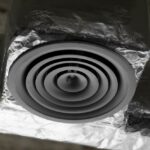Homeownership comes with a plethora of responsibilities. One of the most critical is being vigilant about the integrity of your home’s structure.
If you suspect that your home might have a slab leak, you’re not alone. Many homeowners overlook the signs of a slab leak until it becomes a serious issue.
So, what should you be looking for? Below, we explore the essential signs of a slab leak, including how you can detect these issues in your home.
Common Signs of a Slab Leak
Identifying signs of a slab leak early can make a substantial difference in mitigating further damage. Below are several critical signs that you should keep an eye on:
High Water Bills
One of the first indications of a slab leak is an unexpected spike in your water bill. If you notice a significant increase without a corresponding change in usage, it’s worth investigating.
Some homeowners report increases up to 50% higher than normal. This trend could indicate that a leak is allowing water to escape before it reaches your fixtures.
Unexplained Moisture
Moisture or standing water in unexpected areas is a telltale sign of potential water issues. Check your floors for damp spots, and don’t overlook the walls.
Even if you can’t see water pooling, feel for wetness in your carpet, along baseboards, or beneath furniture. If you detect unusual moisture, prompt action is necessary to address the potential leak before it’s too late.
Cracks in Walls or Floors
Foundation issues often manifest as cracks in walls or floors. If you start to notice new cracks or if existing cracks expand suddenly, it may indicate a slab leak.
Additionally, irregular or uneven floors can also signal that there is excessive water pressure affecting your home’s foundation. This can lead to costly repairs if not addressed swiftly.
Water Damage Signs
Look for classic water damage signs such as discoloration or bubbling paint and peeling wallpaper. These symptoms can be the result of prolonged moisture exposure caused by a leak.
Over time, untreated water damage can result in mold growth, unsafe air quality, and deteriorating structural elements in your home. This poses health risks for you and your family.
Sound of Running Water
If you hear the sound of running water while all fixtures in your home are turned off, it’s a significant sign that water is escaping somewhere. This noise can be subtle, but if it’s constant, it’s time to investigate.
A constant sound can indicate that your plumbing system is under stress, leading to potential leaks.
Foundation Issues
Doors and windows that stick or are difficult to open can indicate foundation movement due to water damage. This is because as the foundation settles unevenly from the effects of water erosion, the alignment of doors and windows can be affected. This may lead to gaps or misalignments that make them hard to operate.
Mold or Mildew Growth
Increased humidity or visible mold in corners or hidden areas can indicate a moisture problem due to a leak. Slab leaks create an environment conducive to mold growth. If moisture accumulates due to a leak, it can promote mold, especially in areas that are not well-ventilated.
Warm or Hot Spots
Areas of the floor that feel unusually warm to the touch may suggest a leak in a hot water line. When hot water leaks from a pipe beneath the slab, it can heat the surrounding concrete, creating localized hot spots. This is often more noticeable in cooler areas of the home.
Wet or Damp Spots
Puddles or areas of dampness on the floor, especially in places where water shouldn’t accumulate, can signal a leak. As water seeps through cracks or gaps in the slab, it can surface, leading to moisture accumulation on the floor. These wet spots may not always be near plumbing fixtures, which can make them harder to identify initially.
The Importance of Early Leak Detection
Addressing the signs of a slab leak early on is critical for several reasons. First, ignoring these indicators can lead to severe water damage, which can undermine your home’s structural integrity.
Second, moisture can create an ideal environment for mold growth. Living in a home with mold exposure can lead to health complications.
How to Detect These Signs
Detecting a leak requires careful observation and attention to detail. Here are some methods you can employ: Regularly check your water meter for unusual readings. If the meter changes without using any water, there may be a hidden leak. Perform visual inspections of your home’s interior and exterior. Look for signs of moisture, especially near plumbing fixtures and the foundation.
Pay attention to your home’s foundation and landscaping. If you notice uneven settling in your yard or new cracks forming, these are cause for concern.
If you’re uncertain about the state of your plumbing, seeking professional assistance is advisable. There are numerous leak detection solutions available that can pinpoint the precise location of the issue before it escalates into more significant damage.
Preventive Measures to Consider
Preventing slab leaks is equally as essential as identifying their signs. Here are some proactive measures homeowners can take:
Regular Plumbing Inspections
Scheduling regular plumbing inspections can help you identify potential issues before they become serious. Professional plumbers can run thorough inspections and recommend appropriate maintenance treatments based on their findings.
Maintain Proper Drainage
Ensuring that your property has proper drainage is vital to prevent water accumulation near the foundation. This means ensuring that gutters, downspouts, and landscaping work efficiently to direct water away from your home.
Monitor Water Pressure
Maintaining appropriate water pressure is crucial to minimize wear and tear on your plumbing system. Too much pressure can stress pipes and lead to leaks over time. Monitoring your water pressure can help prevent issues before they arise.
Signs of Slab Leak: Act Before It’s Too Late
Being aware of the signs of a slab leak is essential for every homeowner. By regularly monitoring your water bills, checking for unexplained moisture, and watching for cracks in walls, you can help protect your home from potential damage.
When you notice any of these signs, avoid complacency and act quickly to mitigate further damage. Remember, you do not have to tackle issues alone-consider investing in leak detection solutions to ensure your home remains safe and sound. Protecting your investment is worth the effort.
Did you find this article helpful? If so, check out the rest of our site for more.







